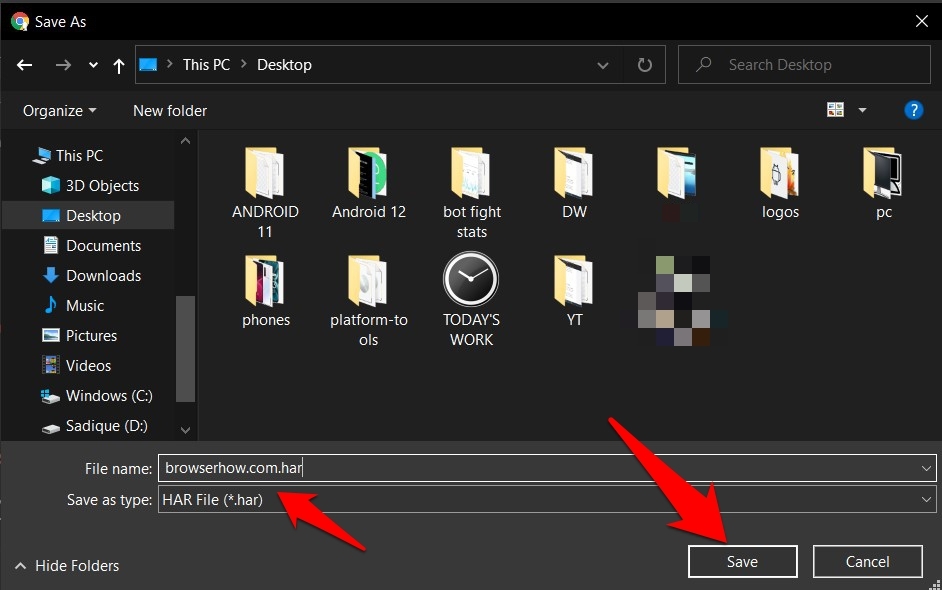

- HAR CHROME WEBTOOLS DRIVERS
- HAR CHROME WEBTOOLS ANDROID
- HAR CHROME WEBTOOLS CODE
- HAR CHROME WEBTOOLS OFFLINE
- HAR CHROME WEBTOOLS FREE
Then we invoke the send() method to enable the Network, and then call send() again to pass in the built-in command Network.emulateNetworkConditions() and the parameters we’d like to send with this command. On line 21, we get the DevTools object by calling getDevTools(). With access to Chrome DevTools, it becomes possible to simulate these scenarios. Information on the required and optional parameters for this command can be found in the documentation. The CDP command to fake a network connection is Network.emulateNetworkConditions.
HAR CHROME WEBTOOLS OFFLINE
It may be important to test how your application behaves under such conditions where the internet connection is slow (2G) or goes offline intermittently. It’s not uncommon to reach a weak network signal, and therefore a slower internet connection. Many users access web applications via handheld devices which are connected to wifi or cellular networks. On line 27, I open the “Google” homepage which is rendered with the specifications I provided as shown in the figure below. Then on line 26, I call the executeCdpCommand() method and pass two parameters: the command name as “tDeviceMetricsOverride” and the device metrics Map with the parameters. On line 19, I create a Map with the required keys for this command.
HAR CHROME WEBTOOLS CODE
However, to streamline this a bit by only passing the required parameters, I’m going to use the raw executeCdpCommand() instead as shown in the code below. For any of the 8 optional arguments that we don’t need to send, we can pass Optional.empty(). In our Selenium tests, we could use the DevTools::send() method using the built-in setDeviceMetricsOverride() command, however, this Selenium API accepts 12 arguments – the 4 that are required as well as 8 optional ones. These four keys are mandatory for this scenario, but there are several optional ones as well. The CDP command to modify the device’s metrics is tDeviceMetricsOverride, and this command requires input of width, height, mobile, and deviceScaleFactor. How can we use Selenium’s new CDP functionality to accomplish this? Most of the applications we build today are responsive to cater to the needs of the end users coming from a variety of platforms, devices like phones, tablets, wearable devices, desktops and orientations.Īs testers, we might want to place our application in various dimensions to trigger the responsiveness of the application. Let’s explore how we can utilize these new Selenium 4 APIs to solve various use cases.
HAR CHROME WEBTOOLS DRIVERS
The Chromium-based drivers such as ChromeDriver and EdgeDriver now inherit from ChromiumDriver, so you also have access to the Selenium CDP APIs from these drivers as well. The executeCdpCommand() can be used if there isn’t a Selenium wrapper API for the CDP command, or if you’d like to make the call in a different way than the Selenium APIs provide. It does not use the wrapper APIs but instead allows you to directly pass in a Chrome DevTools command and the parameters for that command. The executeCdpCommand() method also allows you to execute CDP methods but in a more raw sense. These commands are wrapper methods that make it cleaner and easier to invoke CDP functions. The getDevTools() method returns the new DevTools object which allows you to send() the built-in Selenium commands for CDP. Selenium 4 introduces the new ChromiumDriver class, which includes two methods to access Chrome DevTools: getDevTools() and executeCdpCommand().
HAR CHROME WEBTOOLS FREE
Join us for a free virtual event dedicated to promoting excellence in frontend testing strategies.


HAR CHROME WEBTOOLS ANDROID



 0 kommentar(er)
0 kommentar(er)
